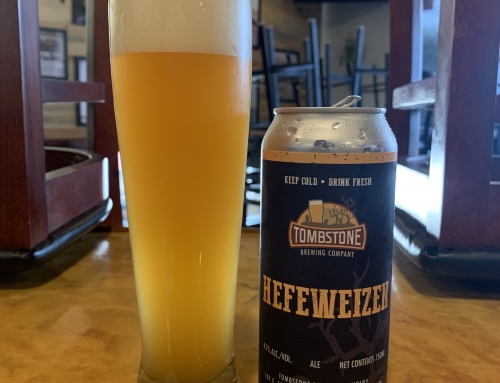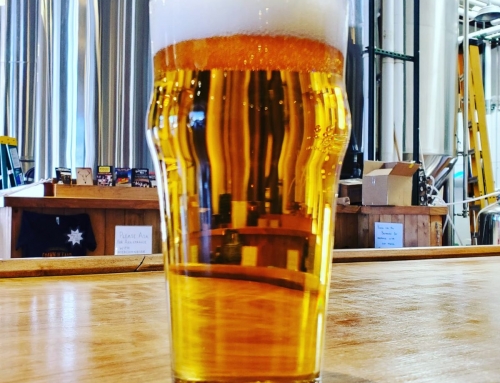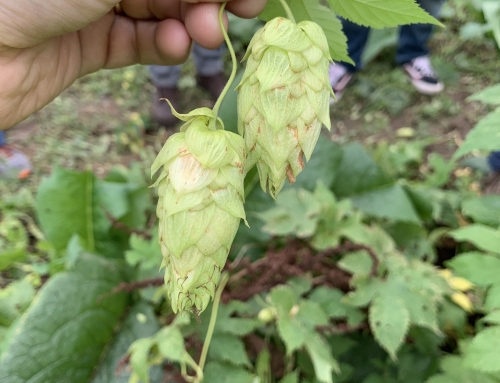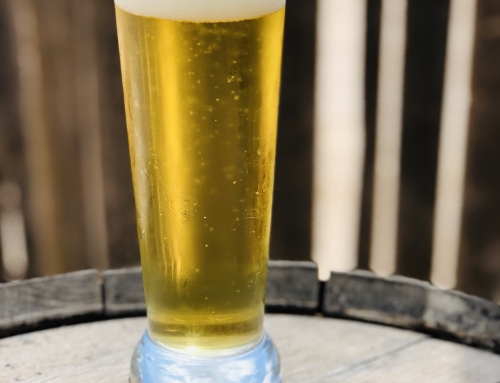It seems like every time Matt and I get the opportunity to get out of the brewery, hang out with other brewers, and stay up late drinking beers, we have the best brainstorming sessions about the future of Tombstone beers. Every time we get these chances, I always come back super excited about what we’ve got coming up. Our most recent opportunity to have this time of marathon brainstorming session happened this last weekend when we went up to Phoenix for a beer dinner followed up with our first collaboration brew with Wren House and Pueblo Vida. Getting to brew a collaboration with these breweries that we have so much respect for was a great time, very educational discussing how we each do things a little bit differently, and it was awesome to have the opportunity to hang out with other brewers instead of continuing our feeling of isolationism so far away from the brewing action in Phoenix and Tucson.
When we got back from our trip, I was looking forward to sampling our most recent round of beers which had been dry hopped just before leaving town. Typically, I like to write blog posts the day of the brewday or a few days before brewing. However, I struggled a lot to write this post. Each time I thought about what I wanted to write, I ended up going on multi-hour tangents in my head about the use of the word “session” and how “Session IPA” is admittedly a dumb name for a style, but also how the basis of people’s arguments about using the word is also kind of ridiculous. Unfortunately, I’m not going to be able to make myself write this blog post without a rant first… If all you want to do is read about the beers we brewed, skip ahead a few paragraphs!
There seems to still be a lot of discussion about whether or not Session IPA is a style with some people claiming that a Session IPA is really just a pale ale, others saying that “session” is defined as being less than 4.5% ABV, low IBU, mildly carbonated beers because that’s the expectancy of English session ales, and others blindly touting that it’s clearly not a style because the BJCP doesn’t recognize it.
Starting with the last argument… The BJCP guidelines exist as a way of giving parameters to a style. If styles were never invented, the BJCP would never create guidelines. The BJCP also has a lot of issues with their guidelines that spread misconceptions about various styles and they exist for competition use. I brew beer that I think is going to taste great and if it happens to fit into a style guideline, we will consider competing with it. However, I would never sit down with style guidelines in front of me while I develop a recipe with the goal of brewing a style within a flawed system’s parameters.
As far as the definition of session in England: I hate to be “that” guy, but… this is America. Basically since the beginning of craft beer in America, the overwhelming majority of American ale styles have evolved from English styles. The most obvious differences typically include higher alcohol content, more IBU’s, and higher carbonation levels. Styles like pale ales, IPA’s, and brown ales have entirely different expectations between American and English styles. The only way they’re being differentiated now is when people specify which regional style they are attempting to brew. So if we continue with American craft brewing traditions, should we just start saying “American Session Ale” and then we can agree that the word has different meanings when used in that context?
The most reasonable argument for people saying that using Session IPA as a style name is that the style is really just a pale ale. While I understand why people would say that, I do think there is (or should be) a notable difference. When I think of the classic American Pale Ale, like Sierra Nevada’s, those types of beers are really well balanced. But with a Session IPA, I think the balance should shift towards being dramatically more hoppy. In my opinion, the goal is to take an IPA and pack the same intensity of hop flavor into the beer, but bring the alcohol content down to a range where you can drink more of it without becoming too intoxicated after 4-5 pints.
With my highly opinionated view on the style, I set out to brew a session IPA that I felt would be noticeably different from a pale ale, less than 5% ABV, and fits within the standards that our customers have come to expect from our IPA’s. The problem that I think a lot of brewers face when attempting this style is the perception that low ABV beers are watery. I take a lot of pride in the soft but full mouthfeel of our IPA’s and I wanted to create this beer to continue on with that. As a result, we used a very flavorful Pilsner malt that gives off a slight honey characteristic, increased the ratio of oats used in this beer, used very soft water, a high mash temperature, and a very small amount of dextrin malt to make sure that there would be residual unfermentable sugars to give the beer body. My thought was that if I gave the hops a big enough stage, I’d be able to use a higher quantity of hops per barrel than if I had brewed this with the same techniques that we brew our higher gravity hoppy ales.
With the malt backbone in place, I began working on the hop bill. We were so impressed with the intensely peachy flavor we got from Idaho 7 in our pale ale that I decided to make that a feature in this beer too. I paired the Idaho 7 with another new hop variety: Cashmere. The Cashmere beers that I’ve sampled have all had a great cantaloupe/ripe melon flavor that I thought would pair perfectly with the peach aroma of Idaho 7. Keeping in mind the difference in balance that I believe sets apart Session IPA’s from Pale Ales, I decided to revisit some old wisdom, but this time with a twist.
When I first began brewing IPA’s in 2009, the most common advice for balancing an IPA properly was to use a specific IBU to gravity units ratio of 1:1. For example, if the beer had a specific gravity of 1.060 then the target IBU’s should be 60 IBU’s. As the trend has shifted in the last few years to lower bitterness with more hop flavor and aroma, I knew that this was a beer that could easily be considered unbalanced if the hop schedule wasn’t perfect. In the past couple years, I’ve actually begun to think of IBU’s as a side effect of hop additions rather than the primary goal of hop additions. I believe that a third unit should be brought into play that could be referred to as an “Aroma Unit.” The small hang up with trying to maximize aroma units is that the more aroma you try to achieve from hops, the more bitterness you will get as well. I ended up shortening the contact time for the hops by decreasing our whirlpool time to stop the utilization of bittering acids while maximizing the oil extraction.
After sampling the beer for the first time yesterday, I’m very happy with the end results. The beer is 4.9% ABV, extremely aromatic, has really awesome head retention, a full, creamy mouthfeel, and is very juicy, almost like candied peaches. I believe that it holds up very well to the standards we’ve created with our IPA and that it will be a great alternative for people at a bar when trying to hang out drinking with friends for longer periods of time than would be possible with the IPA.
The second beer brewed in our most recent round of 3 beers is a new and improved Double IPA. The first batch of Double IPA was a beer that I enjoyed a lot, but I felt that it was missing something. It was like the amarillo in that recipe couldn’t get out of the shadow of the Simcoe and Citra, so it really didn’t bring anything to the beer. It was a strange thing to notice since the original DIPA used the same hops as our IPA and we don’t have that occurrence with the regular IPA. This time around, the Amarillo was replaced with Mosaic lupulin powder for the dry hop. The use of Apollo hop oil, plus an extra bag of oats really put the finishing touches on the original recipe. The aroma is incredibly intense from the sample I pulled yesterday and although it is 8.2% ABV, the drinkability remains very good.
The 3rd beer is another new beer for us: Coffee Milk Stout. The coffee being used is a great Ethiopian coffee from Ground Control which gives a really nice low level of roastiness paired with an intense blueberry coffee flavor. I’m typically very picky about coffee in stouts because I frequently find them to taste like green pepper after a short period of time. Testing this coffee in a cold brew, we got the intense blueberry flavor and none of the acidic, tannic, or peppery flavors that I find off putting in beers. At 7.5% ABV, the base stout is thick without being overly sweet or cloying. I can’t wait to try the finished beer after the coffee has been added.
All 3 of these beers should be ready by early next week, so if you’re one of the people saying that our beer keeps disappearing too quickly before you have an opportunity to get it, stay tuned around Tuesday or Wednesday to find out where these will be available!





Leave A Comment